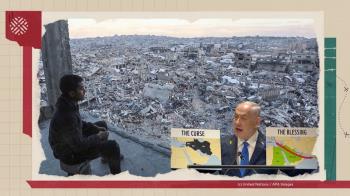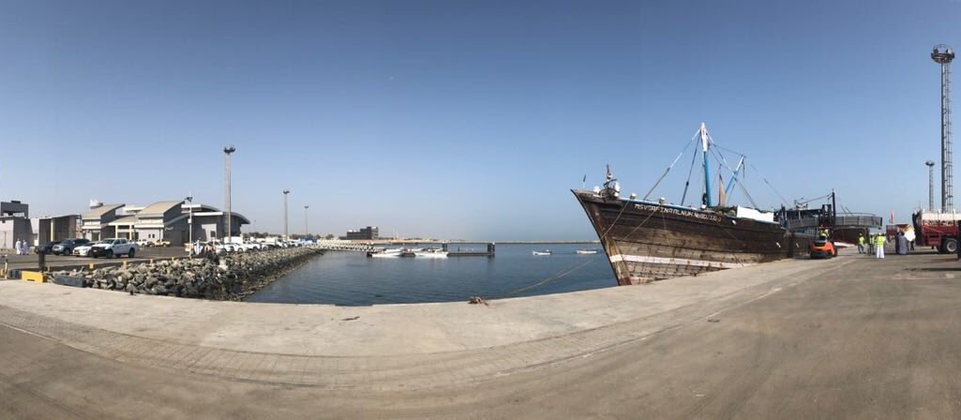Alwaght- Amid growing criticism against the continuation of the unilateral US anti-Iranian sanctions, reports say that Iran and Oman are broadening their trade ties. Arab sources said that a direct maritime transportation line has recently been launched between the two regional countries, connecting southern Iran’s Jask Port to Al-Suwaiq Port in Oman.
Reports suggest that the maritime transportation line is established by Oman’s ports company known as Marafi as part of its initiative to set up sea transit lines with the Islamic Republic in association with the private sector.
According to the Omani company, the new line will support the provision of goods to the Omani local markets and that the transportation operations have commenced.
Why is Al-Suwaiq Port important to the Iranian-Omani ties?
The port of Al-Suwaiq is located in northern Oman, 112 kilometers from the capital Muscat. The port mainly provides a fishing platform but at the same time commercial vessels of less than 5,000 tons can dock there. Its commercial part was opened in 2018 and can be described as special to the Iranian trade.
The port can host small Iranian ships and their loads go directly to the customs without the time-taking and restrictive formalities.
Two years ago, Muscat officials began the expansion of the port to promote trade with Iran. In October 2018, Iran’s Bandar Abbas officials negotiated with Al-Suwaiq officials the ways to augment the seal transit lines between the two countries. At the time, the Omani side vowed to provide the infrastructure necessary to expand the port capacity within 9 months.
Last month, the first Iranian ship carrying fruits and vegetables docked in the port. Iranian food exports for the first time were unloaded in the Omani port.
A look at Iran-Oman trade relations
Oman, Iran’s southern neighbor with 5 million population, ranks third in terms of ports facilities in the region. In 2019, the two countries’ trade volume hit $1.160 billion.
Over the past two years, Iran and Oman's trade saw growth. Now Oman is the ninth-largest Iranian trade partner. Iran has a surplus in trade with Oman as it exports over 700 million to the Arab country and imports about 400 million worth of goods. With regard to the Iranian non-oil trade with the world countries, the trade with Oman is 1.6 percent of the total Iranian trade. The figure is considerable given the capacity of this country compared to big Iran trade partners.
Access to the international waters, closeness to important Iranian ports, and economic stability make Oman a destination of choice for Iranian exporters.
US sanctions policy fails in the light of profitable Iran-Oman trade
It has to be taken into account that the Iranian-Omani relations are of special significance due to the two countries’ geopolitical, security, and political traits. Their neighborhood in the Persian Gulf and Strait of Hormuz ties part of their economy and security to each other.
Although Washington for decades has been pressuring Iran with sanctions and especially the US President Donald Trump in May 2018 reinstated the anti-Tehran sanctions after scrapping the nuclear deal, Oman has always kept advancing its trade relations with the Islamic Republic. So far, its trade with Tehran only insignificantly took influences from the anti-Iranian sanctions.
Aside from the trade relationship, it should be known that part of the Iranian-Omani coordination and convergence is linked to security and political commonalities of the two nations in the region.
Among the Persian Gulf Arab states, Oman holds the closest relations with Iran. The country is in continuous worry about Saudi-propagated Wahhabism’s stance against Muscat. It is also concerned about the expansion of the fundamentalist ideology to its territories. So, Oman looks at Iran as a regional balance maker to contain Saudi Arabia. The country has a very small Shiite population and its dominant faith is Ibadism, a branch of Islam, and so there is no ground for religious tensions with Iran.
Some experts even suggest that the Iranian-Omani relations bear the potentials to incapacitate and blur the military alliance of the (Persian) Gulf Cooperation Council. This alliance is established solely to create a balance of power with Iran in the southern Persian Gulf, with its basis being what many call the constant “illusion” the Persian Gulf monarchies mainly Saudi Arabia and the UAE carry towards Iran. In 2010, Muscat signed a security pact with Tehran according to which Oman announced plans to hold military drills with the Islamic Republic. The pact drew the negative reaction of some regional states like Saudi Arabia.
The coalition with Iran is important for Oman given the positive approach of the Muscat leaders to long-term cooperation and partnership with Tehran and also the specific nature of the Omani home policy.
Expansion of these relations under the new sultan Haitham bin Tariq Al Said, who succeeded his cousin Sultan Qaboos in early January, shows that the policy of the sultanate even under the new sultan like before will revolve around a warm and growing relationship with the northern neighbor Iran.



























